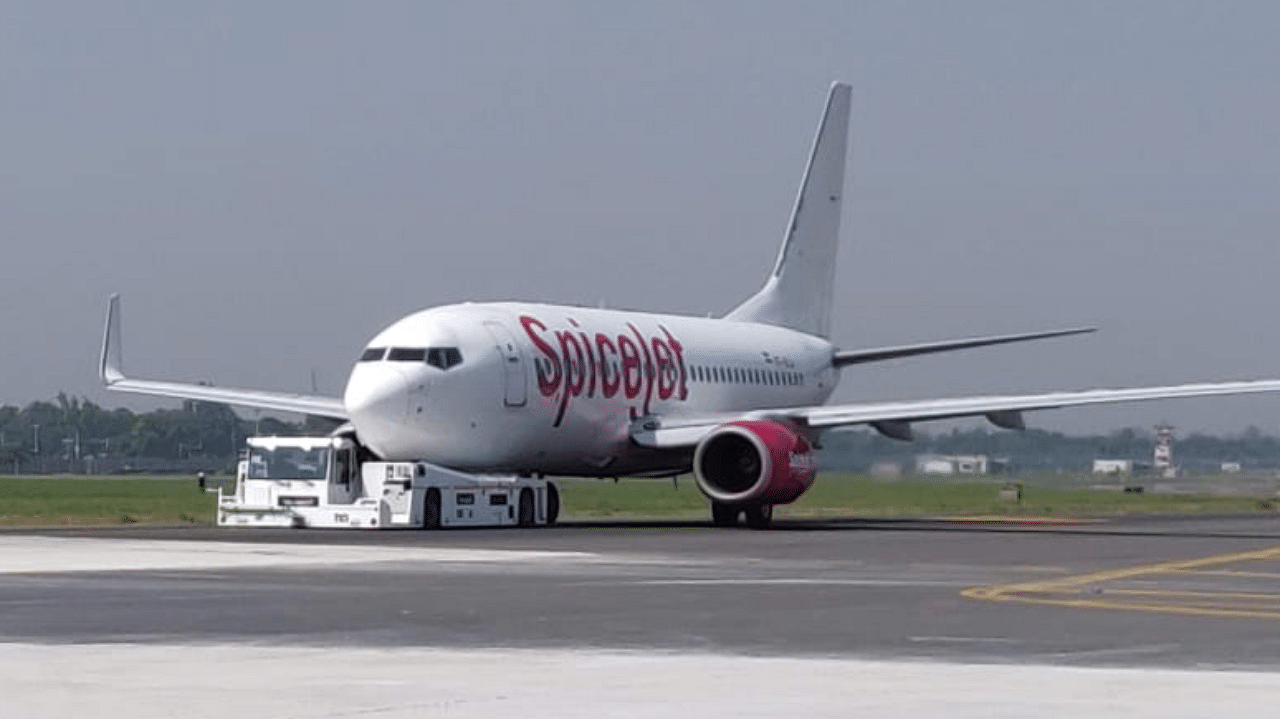
Indian aviation and Delhi airport created history on May 6 when the 1,000th TaxiBot (taxiing robot) mission was completed.
Touted as a 'green solution' for the global aviation industry, a TaxiBot is a semi-robotic towbarless aircraft movement equipment developed by the Israel Aerospace Industries.
The 800-hp hybrid-electric engine, controlled by the pilot from the cockpit using regular pilot controls, can move an aircraft from the terminal gate to the take-off point (taxi-out phase) and return it to the gate after landing (taxi-in phase).
Delhi Airport estimates that since 2019, when the first TaxiBot was used, approximately 214,000 litres of Aviation Turbine Fuel (ATF) have been saved and 532 tonnes of Co2 emissions prevented. Among the airlines using TaxiBots are SpiceJet, Air India Express and Air India, and trials have been successfully carried out for Air Asia, Go Air and IndiGo.
TaxiBots are slated to debut at Bengaluru Airport, the second busiest airport in the country, soon with one Taxibot already stationed at the airport.
What a TaxiBot does is simple. The robot helps push the aircraft to a point short of the runway where the pilot can start the engines for take-off.
Normally an aircraft is tugged by a ground vehicle to the Tug Detach Point (TDP), which is usually reached within 1.5 to 2 minutes. Following this, the aircraft has to switch on its engines and taxi to the runway. Starting the engine early means that the aircraft not only has to use ATF but this also leads to both noise and air pollution as carbon dioxide is released into the atmosphere.
Given that a Boeing 737 or an Airbus A-320 aircraft, on average, takes about 11 to 13 minutes to taxi, it is likely to burn over 200 litres of ATF. So, using a TaxiBot can translate into a huge saving for the environment as also the airlines. The largest cost component for airlines is ATF which accounts for over 40 per cent of their operating expenses.
There are other benefits of using TaxiBots. Starting the aircraft engine late ensures that there is less wear and tear of the engine. This decreases the operating costs for airlines. In addition, starting engines later also helps prevent Foreign Object Damage or something from the ground getting sucked into the engine and damaging it.
Nripendra Singh, Industry Principal, Aerospace & Defense Practice, Frost & Sullivan, says using TaxiBots makes sense in India since it helps reduce operational costs of airlines, which are among the highest in the world here.
"During taxi, average fuel burn for a narrow-body aircraft is ~0.1 kg/second while it is ~1-2 kg/second for a wide-body aircraft. In India, fuel is one of the biggest contributors to the cost of operations for Indian carriers, which makes this concept more attractive as it hits the core requirement of the airlines, airports, and ground handlers," he says.
Lewis Burroughs, Head of Aviation, India, ICF Consulting India Private Ltd, agrees with Singh. Anything which helps demonstrate the safety, reliability and efficiency gains of new technology is a win for the industry, he says.
Singh believes that irrespective of the price or adoption rate, the value added to all stakeholders (airline, airport, and ground handlers) will determine whether the technology gains traction in the future.
KSU Aviation, the owner and operator of Taxibots in India with Celebi Aviation as a shareholder in the project, is optimistic about the success of TaxiBots in India, and plans to introduce it at Bengaluru Airport.
Ashwani Khanna, Director, KSU Aviation says that one Taxibot is stationed at Bengaluru Airport and will begin TaxiBot operations soon, which will benefit airlines operating out of the second busiest airport in the country.
India, which is slated to become the third-largest global aviation market by 2024, has achieved 1,000 taxi bot missions in about two years. In comparison, it took Frankfurt airport (where TaxiBot operations started earlier) about two years to touch 400 full Taxiboting missions.
(Ashwini Phadnis is a Delhi-based senior journalist.)